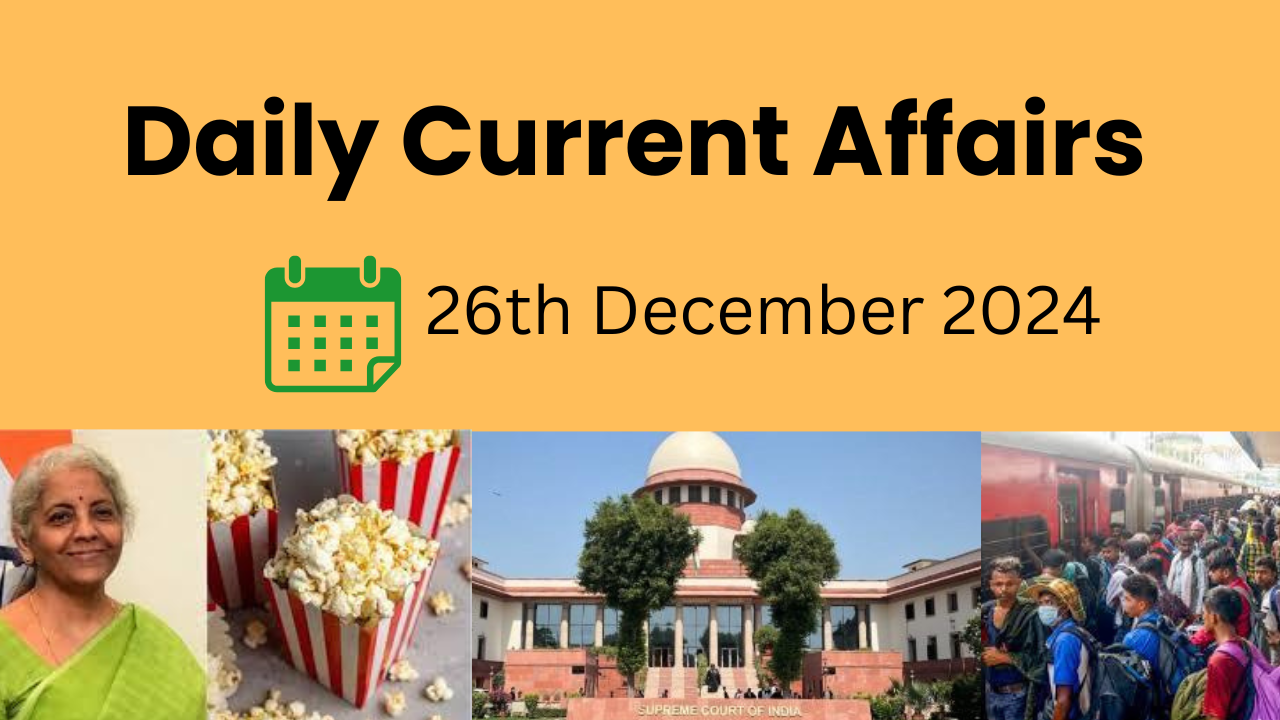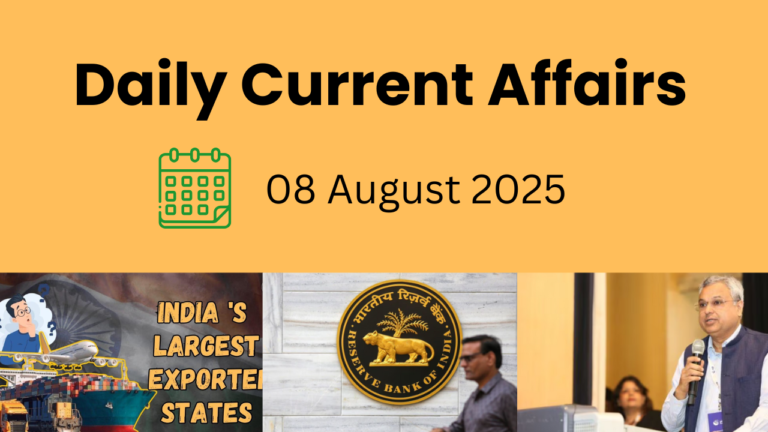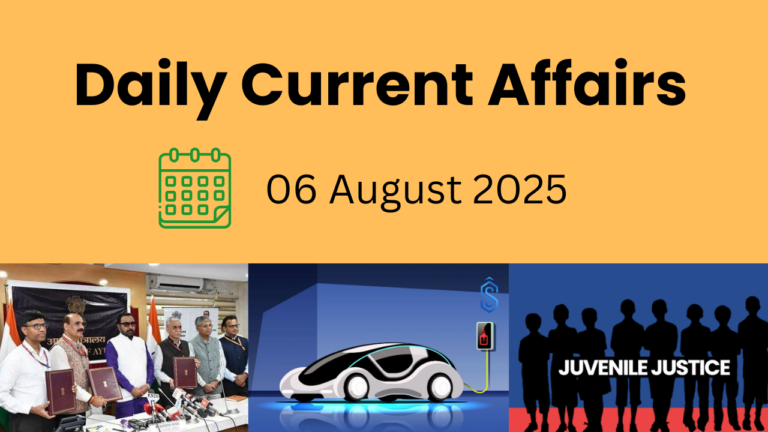1. Supreme Court Restrains ED from Accessing Seized Digital Devices
Context: In a landmark ruling, the Supreme Court (SC) has prohibited the Enforcement Directorate (ED) from accessing or copying data from electronic devices seized during raids on Santiago Martin, widely known as the “lottery king,” his associates, and employees.
This judgment underscores the protection of fundamental rights, including the right to privacy, and could shape future guidelines on how digital devices are handled during investigations.
What is the Enforcement Directorate (ED)?
Background:
- The ED originated in 1956 as an Enforcement Unit under the Department of Economic Affairs to address violations of the Foreign Exchange Regulation Act, 1947.
- In 1957, it was renamed the Enforcement Directorate, and by 1960, its control shifted to the Department of Revenue.
About the ED:
- The ED is a specialized financial investigation agency under the Ministry of Finance tasked with enforcing:
- The Foreign Exchange Management Act, 1999 (FEMA), a civil law.
- The Prevention of Money Laundering Act, 2002 (PMLA), a criminal law.
- Headquarters: New Delhi
- Governance: Operates under the Central Vigilance Commission (CVC) Act, 2003.
Composition:
- Staffed by officers from the Indian Revenue Service (IRS), Indian Police Service (IPS), and Indian Administrative Service (IAS).
- The Director of Enforcement, appointed by the Central Government, serves a two-year term as mandated by the CVC Act.
Background of the Case:
The ED’s Operation:
- In November, the ED conducted raids at 22 locations across six states following a complaint by the Meghalaya Police.
- Allegations targeted Future Gaming and Hotel Services Pvt Ltd for monopolizing the lottery business in Meghalaya.
- Raids uncovered 12.41 crore in cash.
Political Contributions by Future Gaming:
- The company was a major purchaser of electoral bonds, contributing 1,368 crore between 2019 and 2024.
- Trinamool Congress: 542 crore
- DMK: 503 crore
- YSR Congress: 154 crore
- BJP: 100 crore
Supreme Court’s Order:
Key Directives:
- A two-page order by Justices Abhay S Oka and Pankaj Mithal barred the ED from accessing data from devices seized from Santiago Martin and his associates.
- The order also stayed summons under the PMLA, which required individuals to appear for data extraction.
- The case is now being heard alongside similar petitions from Amazon India and Newsclick regarding digital device seizures.
Petitioners’ Arguments:
- The plea emphasized violations of privacy and constitutional rights due to unregulated access to sensitive personal and business data.
- It called for safeguards against indiscriminate data collection during investigations.
Implications for ED Investigations:
ED’s Response:
- Senior ED officials acknowledged the SC’s decision as “unprecedented” but assured it would not impact their investigations.
- The agency highlighted its reliance on other evidence and property attachments worth ₹622 crore.
Legal Implications:
- The ruling establishes a precedent emphasizing the right to privacy and the need for structured guidelines on handling digital evidence.
- Lawyers, including former Attorney General Mukul Rohatgi, highlighted concerns about data misuse and the lack of procedural safeguards.
Broader Concerns:
Nature of Seized Devices:
- The ED seized 17 mobile phones, hard drives, pen drives, and email backups containing sensitive financial, medical, and business records.
Tax Compliance:
- Future Gaming reported paying 28,205 crore in GST for state lottery operations, asserting its compliance with tax laws.
Call for Clear Guidelines:
- The petition urged the need for procedural standards to protect privacy rights and prevent unwarranted data access during investigations.
Conclusion: The Supreme Court’s order reinforces the significance of safeguarding digital privacy in legal proceedings. As this case unfolds, it may pave the way for new legal frameworks that balance investigative needs with the protection of constitutional rights in an era where sensitive data is predominantly digitized.
2. A Beginner’s Guide to Quantum Computing
Context: Quantum computers are revolutionary devices that utilize the principles of quantum mechanics to solve problems far faster than traditional computers. First proposed by physicist Richard Feynman in 1982, the idea arose from the observation that classical computers struggle to simulate quantum systems effectively.
Basics of Quantum Computing:
Classical Computers:
- Operate using bits, which represent 0 or 1.
- Use the binary system to process and store information.
Quantum Computers:
- Operate using qubits (quantum bits), which can exist in states of 0, 1, or both simultaneously (a phenomenon known as superposition).
- Leverage two core principles of quantum mechanics:
- Superposition
- Qubits can hold multiple states at the same time.
- Analogy: A spinning coin is both heads and tails until it stops spinning (or is measured).
- Entanglement
- Links two or more qubits so their states are connected, regardless of the distance between them.
- Example: Opening one glove box instantly tells you the type of glove in another box.
These properties enable quantum computers to process vast amounts of data simultaneously, providing a significant speed advantage over classical computers.
India’s Quantum Mission:
India launched the National Quantum Mission (NQM) in 2023, with an allocation of ₹6,000 crore over eight years to drive advancements in quantum technologies.
Key Objectives:
- Development of Quantum Technologies:
- Build quantum computers with 50 to 1,000 physical qubits over the next eight years.
- Focus on scalable quantum hardware and error correction mechanisms.
- Quantum Communication:
- Establish a secure quantum communication network for strategic locations.
- Develop satellite-based Quantum Key Distribution (QKD) systems to enhance data security.
- Quantum Materials and Sensors:
- Design and fabricate quantum materials for specialized applications.
- Develop sensors for precision tasks like meteorology, healthcare, and navigation.
- Quantum Algorithms and Applications:
- Research quantum algorithms for optimization problems, cryptography, and artificial intelligence.
- Apply quantum technologies to areas such as drug discovery, climate modeling, and financial forecasting.
Conclusion:
Quantum computing represents the next frontier in technological innovation, with the potential to revolutionize fields from cryptography to healthcare. While significant challenges remain, the global race to harness quantum capabilities is well underway, with countries like India making significant investments to lead in this transformative domain.
3. Khel Ratna Award Controversy
Context: The exclusion of Manu Bhaker, a double Olympic medallist in shooting, from the list of nominees for the Major Dhyan Chand Khel Ratna Award has sparked a significant controversy. Following public outcry, both Bhaker and the Sports Ministry issued clarifications to address the situation.
About the Major Dhyan Chand Khel Ratna Award:
Named After:
- The award honours Major Dhyan Chand (1905–1979), one of India’s greatest field hockey players.
Established:
- Inception: Introduced in 1991–1992, originally called the Rajiv Gandhi Khel Ratna Award.
- Renamed: In 2021, the award was renamed to celebrate the legacy of Major Dhyan Chand.
Significance:
- Recognized as India’s highest sporting honour, it is presented annually by the Ministry of Youth Affairs and Sports.
Eligibility Criteria:
- Outstanding Performances:
- Awarded to athletes who excel at international competitions, such as the Olympics, Asian Games, Commonwealth Games, World Championships, and World Cups, over the preceding four years.
- Special consideration is given to achievements during major global events in their respective years.
- Exclusions:
- Athletes involved in doping charges or under investigation are ineligible.
General Rules and Conditions:
- One-Time Recognition:
- The award can be conferred only once to an individual.
- Annual Selection:
- Typically, only one award is presented each year, except in exceptional circumstances.
- Posthumous Awards:
- The award can be given posthumously when necessary.
- Revocation:
- The government reserves the right to cancel or annul the award for violations, including doping.
Award Benefits:
- Cash Prize:
- A sum of 25,00,000, exempt from income and wealth tax.
- Certificate of Honour:
- A recognition certificate presented to the awardee.
- Medal:
- A prestigious medal symbolizing excellence in sports.
Conclusion:
The controversy surrounding Manu Bhaker’s exclusion has brought attention to the selection process and criteria for the Khel Ratna Award. It highlights the need for transparency and fairness to uphold the credibility of India’s highest sporting honour.
4. The Popcorn Tax Debate: GST Controversy in India
Context: The GST Council has introduced varying tax rates on popcorn, sparking debate over its rationale and implications:
- Non-branded, salted/spiced popcorn: 5% GST
- Pre-packaged and branded popcorn: 12% GST
- Caramel popcorn (sugar confectionery): 18% GST
The Rationale:
- According to Finance Minister Nirmala Sitharaman, products with added sugar attract higher tax rates.
Criticism of the Popcorn Taxation:
Unnecessary Complexity:
- Differentiating tax rates based on content and branding complicates the GST framework, undermining the intent of a simplified tax system.
Minimal Revenue Impact:
- Former Chief Economic Advisers argue that the negligible revenue generated does not justify the inconvenience caused to businesses and consumers.
Compliance Challenges:
- Classifying popcorn varieties, such as salted caramel popcorn, adds confusion and enforcement difficulties.
Public Backlash:
- Media and critics have ridiculed the three-tier tax structure for a basic snack, calling it excessive and unnecessary.
Understanding GST: The Backbone of India’s Indirect Tax System:
Introduced by the 101st Constitutional Amendment Act (2017):
The Goods and Services Tax (GST) replaced multiple indirect taxes, streamlining the taxation system in India.
Key Features of GST:
- One Nation, One Tax:
- GST unified various taxes like excise duty, VAT, and service tax under a single framework.
- Dual Tax Structure:
- CGST: Collected by the Central Government.
- SGST: Collected by State Governments.
- IGST: Levied on inter-state transactions, apportioned between the Centre and states.
- Destination-Based Tax:
- GST is applied at the point of consumption, not at the source of origin.
- Tax Slabs:
- Tax rates range from 0%, 5%, 12%, 18%, and 28%, based on the type of goods/services.
- Governance:
- GST Council: The apex body for decision-making on GST matters.
- GST Network (GSTN): IT infrastructure for managing GST operations.
Achievements of GST:
- Broader Taxpayer Base: Increased registration and compliance among businesses.
- No Cascading Effect: Taxes are levied on value addition, with input tax credit reducing double taxation.
- Simplified Compliance for Small Businesses: Initiatives like the Composition Scheme lower the tax burden.
- Efficient Commerce: E-way bills have streamlined inter-state and intra-state trade.
Challenges in GST Implementation:
Multiplicity of Tax Slabs:
- Classification issues, such as the popcorn controversy, highlight GST’s complexity.
Excluded Products:
- Items like alcohol and petroleum remain outside the GST framework.
Reduced Tax Powers for States:
- States face limitations in imposing independent indirect taxes.
Revenue Shortfalls:
- Delayed compensation for states’ revenue losses has hindered fiscal planning.
Conclusion:
The popcorn tax controversy reflects the broader challenges within India’s GST system, from complex tax slabs to compliance difficulties. Simplifying the framework and ensuring fair practices are essential for maintaining public trust and achieving the goals of “One Nation, One Tax.”
5. Report on Domestic Migration: Changing Trends in India
Context: A recent report titled ‘400 Million Dreams’, released by the Economic Advisory Council to the Prime Minister (EAC-PM), provides insights into the evolving patterns of domestic migration in India since the 2011 Census.
What is Domestic Migration?
Internal migration refers to the movement of people within a country, often driven by:
- Push Factors: Lack of jobs, natural disasters, poor education, and inadequate healthcare.
- Pull Factors: Better economic opportunities, higher living standards, and peaceful environments.
Key Findings of the Report:
Decline in Domestic Migrant Numbers:
- Migration numbers have dropped by 12%, from 45.57 crore in 2011 to 40.20 crore in 2023.
- The migration rate has declined from approximately 38% to an estimated 29% in 2023.
Migration Dynamics:
- Short-distance migration dominates, as distance negatively impacts labour mobility.
- Migration originates mainly from regions surrounding urban hubs like Delhi, Mumbai, Chennai, Bangalore, and Kolkata.
Major Migration Routes:
- Top corridors: Uttar Pradesh to Delhi, Gujarat to Maharashtra, Telangana to Andhra Pradesh, and Bihar to Delhi.
Shifts in Migrant Distribution:
- States with Increased Share of Migrants: West Bengal, Rajasthan, and Karnataka.
- States with Decreased Share of Migrants: Maharashtra and Andhra Pradesh.
Reasons for Decline in Migration Numbers:
Improved Infrastructure:
- Enhanced roads, education, healthcare, and public transport at the place of origin reduce the need for migration.
Localized Economic Growth:
- Growth in rural economies has generated job opportunities closer to home, minimizing migration.
Government Initiatives for Domestic Migrants
Inter-State Migrant Workmen Act, 1979:
- Protects migrants from exploitation and ensures fair employment conditions.
Ayushman Bharat – PMJAY:
- Offers 5 lakh health coverage for secondary and tertiary care, benefiting migrant workers and their families.
One Nation, One Ration Card (ONORC):
- Ensures nationwide portability of ration cards, enabling migrants to access subsidized food grains anywhere in India.
Conclusion:
The report underscores a significant shift in domestic migration patterns, influenced by better infrastructure, localized growth, and targeted government initiatives. While migration has reduced, continued focus on improving living standards and providing equitable opportunities across regions remains crucial for fostering inclusive growth.
6. Ministry of Environment Introduces Draft Solid Waste Management (SWM) Rules, 2024
Context: The Ministry of Environment, Forest and Climate Change (MoEFCC) has unveiled the Draft Solid Waste Management (SWM) Rules, 2024, aimed at tackling the adverse impacts of unmanaged solid waste. Set to come into effect from 1st October 2025, the new rules focus on implementing the principles of circular economy, strengthening the monitoring process, and addressing waste management challenges in both urban and rural areas.
Key Highlights of the Draft SWM Rules, 2024:
- Waste Segregation and Disposal:
- All waste generators must separately store construction and demolition waste on-site and dispose of it in line with the Construction and Demolition Waste Management Rules, 2016.
- Bulk Waste Generators’ Responsibilities:
- Bulk waste generators are required to obtain Extended Bulk Waste Generator Responsibility Certificates from the local bodies to ensure environmentally sound collection and transportation of waste, including sanitary waste.
- Restrictions on Landfill Disposal:
- Non-recyclable waste with a calorific value of 1500 Kcal/kg or higher must not be disposed of in landfills, pushing for better recycling and energy recovery practices.
- Centralized Online System by CPCB:
- The Central Pollution Control Board (CPCB) will implement a centralized online system for the registration and annual returns of all obligated entities under the SWM rules.
- Registration for Treatment, Storage, and Disposal Facilities:
- Operators of Treatment, Storage, Disposal Facilities (TSDFs) must register on the centralized online portal to enhance transparency and accountability in waste management.
- Ban on Agricultural Waste Burning:
- Local bodies will be required to prevent the open burning of agriculture and horticulture waste, with stringent penalties for individuals caught violating the ban.
Challenges in Solid Waste Management:
While these new rules aim to improve the overall waste management process, several challenges persist:
- Lack of proper collection and segregation at the source of waste generation.
- Indiscriminate disposal of electronic waste.
- Financial constraints affecting the efficient collection, transportation, and disposal of waste.
Conclusion:
The SWM Rules, 2024 represent a significant step towards improving solid waste management in India by integrating sustainability practices and strengthening monitoring mechanisms. However, successful implementation will require overcoming significant logistical, financial, and behavioral challenges. The shift towards a circular economy and responsible waste management is crucial for the country’s long-term environmental health.




